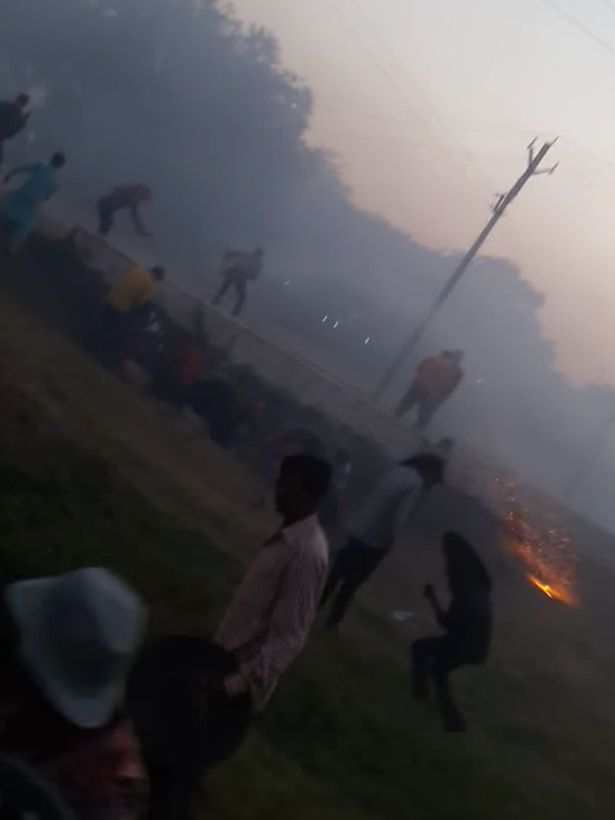Hingot Yuddh
This is a collection of articles archived for the excellence of their content. |
The festival
As in 2001
K K Jha, No vanquished or victors in this 'war', November 22, 2001: The Times of India
The tribals of gautampura village near indore fight a battle of a different kind every year, where at the end of the 'war' there are neither the vanquished nor the victors. called the 'hingot yudh' it is fought on the second day of the diwali festival between the turra and the kalgi factions of the tribals as part of their tradition to propitiate the tribal god. this year as dusk fell the warlords of the turra and the kalgi accompanied by their bands of 'warriors', armed with firearms and missiles (which in local parlance are called hingot), visited devnarayan temple in gautampura and offered prayers to the presiding deity before taking positions against each other. the war began with the warriors of both the factions firing missiles at each other, watched by an excited crowd of 40,000 people. in the exchange of firearms and missiles which continued for about two hours, about 70 people including the spectators and the warriors sustained injuries. but the warriors who sustained injuries wore a jubilant look on their faces. the injured warriors, after getting primary medical aid from doctors, again joined the fight. the commentators, who were giving a live commentary of the 'war', finally declared it over after some misdirected missiles injured a few spectators, some of whom also fainted. they were later rushed to indore for further treatment. the hingot yudh gained some notoriety this time with the warriors not following the rules of war in their totality. the preparations for the yudh, which is like an annual village fair for the people of this region, start with the commencement of the navratri festival. according to mythology, it was in gautampura that gautam rishi acquired heavenly and spiritual powers. but no one in the village has any clue how and when the hingot yudh began. sources said that villagers on this day pluck a lemon shaped hingot fruit from a tree called hingoria. later this fruit is dried up after cleaning it from inside by drilling a hole.
As in 2016

From: Kara O'Neill, Hundreds of villagers hurl lethal fireballs at each other at traditional Hingot Yudh festival, November 15, 2016: Mirror

From: Kara O'Neill, Hundreds of villagers hurl lethal fireballs at each other at traditional Hingot Yudh festival, November 15, 2016: Mirror
The burning missiles are launched by rival turra and kalgi tribes as part of a centuries old tradition celebrated during Diwali
A dramatic video shows the moment hundreds of villagers launch lethal fireballs at each other - as baying crowds watch.
Known as the Hingot Yudh, the age-old festival actively encourages participants to throw burning missiles at each other in front if an excited audience.
The footage shows several explosives being detonated, as well as fireballs being launched across a field as the sun goes down.
It is believed that the video was recorded in Runji Gautampura, a town in Indore district in the Indian state of Madhya Pradesh.
Hundreds of villagers hurl lethal fire balls at each other as part of a centuries old festival The villagers hurl lethal fireballs at each other (Image: YouTube / Rohit bhawsar) The Hingot Yudh is fought on the second day of Diwali - the Hindu festival of lights celebrated every year in autumn.
It is 'fought' between the turra and kalgi tribes as part of their tradition to regain favour with their tribal gods.
As dusk falls, the warriors arm themselves with missiles (known as hingot) and pray in a temple before taking their positions against each other.
Hundreds of villagers hurl lethal fire balls at each other as part of a centuries old festival The festival is celebrated as part of Diwali (Image: YouTube / Rohit bhawsar) The war begins, according to the Times of India , with the warriors of both tribes firing missiles at each other.
Crowds of up to 40,000 people gather to watch the spectacle, which lasts for approximately two hours.